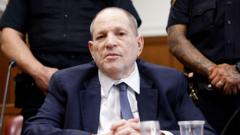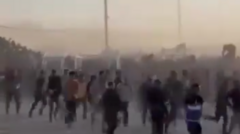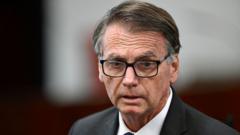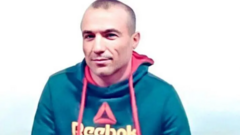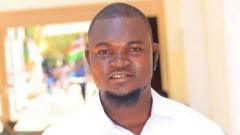This unprecedented trial sheds light on the grim realities of war and the complex legal battles surrounding it.
**Historic Trial Highlights War Crimes in Ukraine: Russian Soldier Faces Justice**

**Historic Trial Highlights War Crimes in Ukraine: Russian Soldier Faces Justice**
Amid the ongoing conflict, Ukraine holds its first war crimes trial against a Russian soldier accused of executing a captive.
In an extraordinary chapter of the ongoing conflict between Ukraine and Russia, a Russian soldier has become the first to face trial in Ukraine for alleged war crimes, specifically the execution of a Ukrainian soldier. Dmitriy Kurashov, known by his callsign "Stalker," stands accused of executing Vitalii Hodniuk, a 41-year-old veteran Ukrainian soldier with the callsign "Penguin," as he attempted to surrender during a fierce confrontation on the eastern frontlines in January 2024.
The trial is unprecedented, marking a significant moment in the pursuit of accountability for wartime atrocities. Ukrainian authorities reported that Russian forces had executed numerous prisoners of war since the conflict escalated but Kurashov is the first soldier to be prosecuted, signaling a commitment to justice amid the chaos of war.
During the proceedings at a local courthouse in Zaporizhzhia, Kurashov appeared subdued and isolated in a glass enclosure, his presence contrasted starkly by the bravado of his militaristic past. He was initially charged with shooting Hodniuk under conditions that allegedly violated war laws, yet Kurashov changed his plea to guilty during the trial, claiming his intention was to expedite the process.
Evidence presented against him includes testimonies from three of his former compatriots from the same unit, who have now turned against him. They corroborated accusations that Kurashov called for surrender before fatally shooting Hodniuk, who was discovered unarmed. The testimonies mark a turning point on the battlefield where loyalty and self-preservation became collateral damage.
The trial raises questions about the legal dynamics involving prisoners of war, as witness credibility may be affected by their captivity and motivations for testifying. The complexity of collecting evidence from a war zone adds to the prosecution's burden, as they navigate challenges stemming from the lack of forensic examination directly after the alleged crime.
While Kurashov's future remains uncertain, with potential life imprisonment looming ahead, the ramifications of the trial stretch beyond individual guilt. It underscores the tensions, moral dilemmas, and brutal realities of war, where human lives are tragically reduced to legal proceedings. Ukraine’s war crimes prosecutors aim to use this case as a stepping stone toward larger accountability efforts, focusing not only on frontline soldiers but on higher military command as well.
As the trial unfolds, the memory of those like Hodniuk, symbolizing the personal tragedies of war, remains at the forefront, presiding over a courtroom determined to confront the darker aspects of contemporary conflict.
The trial is unprecedented, marking a significant moment in the pursuit of accountability for wartime atrocities. Ukrainian authorities reported that Russian forces had executed numerous prisoners of war since the conflict escalated but Kurashov is the first soldier to be prosecuted, signaling a commitment to justice amid the chaos of war.
During the proceedings at a local courthouse in Zaporizhzhia, Kurashov appeared subdued and isolated in a glass enclosure, his presence contrasted starkly by the bravado of his militaristic past. He was initially charged with shooting Hodniuk under conditions that allegedly violated war laws, yet Kurashov changed his plea to guilty during the trial, claiming his intention was to expedite the process.
Evidence presented against him includes testimonies from three of his former compatriots from the same unit, who have now turned against him. They corroborated accusations that Kurashov called for surrender before fatally shooting Hodniuk, who was discovered unarmed. The testimonies mark a turning point on the battlefield where loyalty and self-preservation became collateral damage.
The trial raises questions about the legal dynamics involving prisoners of war, as witness credibility may be affected by their captivity and motivations for testifying. The complexity of collecting evidence from a war zone adds to the prosecution's burden, as they navigate challenges stemming from the lack of forensic examination directly after the alleged crime.
While Kurashov's future remains uncertain, with potential life imprisonment looming ahead, the ramifications of the trial stretch beyond individual guilt. It underscores the tensions, moral dilemmas, and brutal realities of war, where human lives are tragically reduced to legal proceedings. Ukraine’s war crimes prosecutors aim to use this case as a stepping stone toward larger accountability efforts, focusing not only on frontline soldiers but on higher military command as well.
As the trial unfolds, the memory of those like Hodniuk, symbolizing the personal tragedies of war, remains at the forefront, presiding over a courtroom determined to confront the darker aspects of contemporary conflict.





